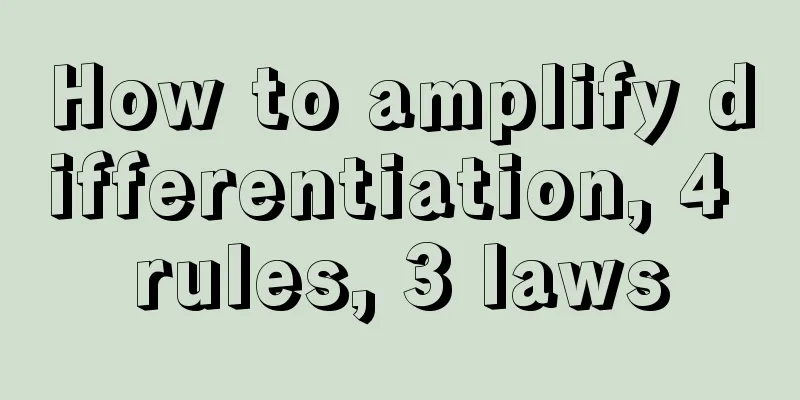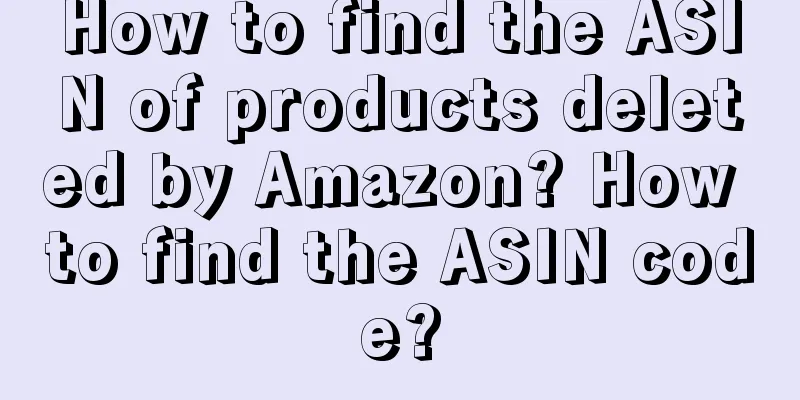MINISO, walking between high-quality products and imitations

While most retail brands are struggling with performance, MINISO's latest report card is so good that it is the envy of its peers. On May 14, MINISO released its first quarter financial report for 2024. In the first three months ending March 31, MINISO achieved revenue of 3.724 billion yuan, a year-on-year increase of 26%; adjusted net profit was 617 million yuan, a year-on-year increase of 27.7%; gross profit margin was 43.4%, even higher than the year-end peak season in the fourth quarter of 2023. In the first quarter, the brand added 217 stores, breaking the historical record for store openings in the same period. At the same time, MINISO's second growth curve also performed well. The revenue of its trendy toy brand TOP TOY increased rapidly by 55.1% year-on-year to 138 million yuan, mainly because the average number of TOP TOY stores increased by 32.2% year-on-year, and same-store sales increased by about 26% compared with the same period in 2023. Starting from a model that looks like "Yiwu small commodities", and going through the doubts of "copying but not original", what kind of company is MINISO? What choice does MINISO face between high-quality products and imitations? What tactics will it use to go further in the future? 1. Pop Mart also needs some respectYou can always trust MINISO’s co-branded IP. In MINISO’s business philosophy, I sell whatever is the most popular. From Disney to Sanrio to Marvel, MINISO seems to have hit the mark every time. This is certainly not a beautiful accident. In fact, MINISO has a sound set of operating thinking and models. Most of the IPs selected by MINISO have wide popularity and reputation around the world, so the success rate of the joint venture is already won at the starting line. MINISO spends at least one year researching and investigating IPs; based on the research report, it formulates a full life cycle development and inventory management plan for each IP, and then uses the ultimate supply chain efficiency to output joint products that are more affordable than official derivatives. At the "sample selection meeting" held by MINISO every Monday, founder Ye Guofu will be present to personally decide whether each product will be put on the market, how much to set the price, and how to market it. With Chiikawa, which has recently become popular on the Internet, MINISO has found business opportunities before other brands. MINISO is the first brand to jointly launch peripheral products with Chiikawa. Compared with the price of several hundred yuan for purchasing on behalf of others, the Chiikawa products of MINISO, which are less than 100 yuan, are particularly attractive. Stores with Chiikawa products will never worry about the source of customers. Image source: MINISO Tmall flagship store Some people say that MINISO is somewhat like Pop Mart. To be precise, MINISO wants to stand on Pop Mart's shoulders and jump higher. The biggest selling point of both MINISO and POP MART is IP. However, most of POP MART's IPs are self-owned, while most of MINISO's IPs are co-branded. In the short term, self-owned IP can usually generate higher gross profit, but it also requires higher sales costs, especially the IP that MINISO cooperates with has long been tested by the market and requires almost no promotion costs; but in the long term, valuable self-owned IP can last forever, has a very high upper limit, and can share time with the brand. Taking blind boxes as an example, MINISO’s price is around 39 yuan, while Pop Mart’s price is around 69 yuan. Compared with Pop Mart’s asset-light model, which mostly uses unmanned vending machines, Pop Mart with a higher price seems to make money more easily. The data also indirectly proves this point: MINISO’s gross profit margin is around 43%, while Pop Mart’s gross profit margin is around 60%. However, MINISO has learned a lot of business skills from Pop Mart and put them into action. First, MINISO sells significantly more products than POP MART and is applicable to a wider range of consumers; Second, the gross profit margins of perfumes and aromatherapy products added by MINISO in the later period have gradually increased compared with previous categories; Third, the revenue of the new brand TOP TOY increased by 90% year-on-year, making it the strongest brand under MINISO. Compared with the traditional MINISO products that focus on household products, TOP TOY's product forms focus on toys, such as blind boxes, building blocks, assembly models, dolls, etc. These products have higher gross profit margins and are more in line with the consumption tendency of Generation Z to pay for their interests. From the current perspective, MINISO is obviously more inclined to the "shortcut" co-branded IP model, and its money-making effect is not worse than that of Pop Mart. So, is this seemingly "easy win" model good? Let's continue reading. 2. When parity bets on “superstores”During Japan's lost 30 years, several affordable brands emerged, the most representative of which are Uniqlo and Don Quijote. However, it is thought-provoking that, at a time when Japan is also facing consumption downgrade, the domestic market has yet to see similar affordable store leaders. Why is this? On the one hand, as the policy strength continues to increase, the domestic economic situation is on the eve of warming up, and people's demand for material things is at the stage of "hoping to spend cabbage prices to buy goods that are more expensive than cabbage"; On the other hand, the current rental pressure of commercial real estate, especially some real estate, is still at a high level. When the number of stores grows exponentially, the cost side will become a huge constraint. Small profits but quick turnover may not be the best model under China's current economic environment and consumer demands. Prior to this, Uniqlo's performance in the Chinese market had gradually cooled in the past two years, and the top management also gave a similar review. Wu Pinhui, CMO of Uniqlo Greater China, said: "We don't want people to think that Uniqlo is just cheap and cost-effective. We hope that consumers will think that Uniqlo is a brand with quality, technology and design concepts." In fact, MINISO is more like a combination of Daiso and Pop Mart. It has a standardized system of 100-yuan products, a rich product line, and a certain sense of design and fashion. It starts from the affordable price but is higher than the affordable price. In addition to the advanced version of the low-price strategy, MINISO’s second option is the “super store” strategy. In this financial report, MINISO has 6,630 stores worldwide, including 4,034 in China and 2,596 overseas. The gap between the number of MINISO stores outside China and that in its home base is not that big. Ye Guofu said that this "exceeded the company's most optimistic expectations." In the first quarter, MINISO's overseas revenue increased by 52.6% year-on-year to 12.219 billion yuan, accounting for 32.8% of total revenue, a significant increase from 27.1% in the same period last year. Overseas same-store sales increased by 21% year-on-year. Everyone likes cheap and large foods, regardless of nationality. Different from the conventional store model in the past, MINISO has been focusing on the "superstore" model in first-tier cities and overseas stores such as the United States in the past two years. These regions have relatively more developed economies, strong purchasing power of local citizens, who pay attention to the shopping experience and are more willing to visit landmark buildings, all of which are highly consistent with the business philosophy of superstores. MINISO said that although the investment in a superstore is about twice that of an ordinary store, the monthly sales of a single store are outstanding, inventory turnover is faster, and the investment payback period is shorter. Although the figures are encouraging, the future of the superstore model will still face considerable challenges. First, the number of superstores is still small, which makes them scarce and they also serve as city landmarks. However, as the number of new superstores increases, their marginal utility will gradually decline, and the average sales per square meter of a single store is likely to be lower than the initial value. Secondly, the geographical locations selected by superstores are mostly located in the core areas of cities and occupy a large area. If profitability cannot be sustained in the future, the pressure on the cost side is bound to double. MINISO should think deeply about how to make its superstores special. Should it sell limited-edition co-operation IPs? Make it an amusement store where consumers can play? Or even open restaurants, cafes, and other stores within stores? We might as well make bold guesses and carefully verify them. 3. How long can the joint venture last?Although MINISO is still a household name, it is still essentially a Japanese "10-yen store" business. What people criticize is MINISO's dark history of "copying but never original". Even its logo has been criticized by consumers as a copy of Uniqlo, and the display design in the store is also mainly red and white. A netizen once used a very insightful sentence to summarize MINISO: its signboard imitates UNIQLO, its furnishings imitate MUJI, and its prices imitate DAISO. Although plagiarism is shameful, it is sometimes useful. "Would you mind having a wife who looks like Lin Chiling?" This joke reveals the user mentality of most consumers: people do not mind and are even happy to buy products with famous brand designs at a bargain price. At MINISO, “we don’t design, we are just the movers of hot products.” Many times, MINISO does things knowing that they are not possible, and often chooses the approach of “getting on board first and buying tickets later” when it comes to moving or copying works of big brands or individual designers. In April 2021, a designer posted a message saying that MINISO used his previously designed pattern on a hat without his authorization. Just as a group of netizens complained that MINISO took plagiarism as commonplace and waited for its apology, things took a dramatic turn. A few days later, the designer posted again, saying that this was a beautiful misunderstanding and called on everyone to support Chinese companies. We can interpret this subtle behavior as follows: if the brand or individual does not sue MINISO, then MINISO will pretend to know nothing and continue to copy; if the brand or individual chooses to sue MINISO, then the brand will directly use money to settle everything. If that doesn’t work, then it will choose other public relations methods such as apologizing or removing the product from the shelves. Judging from the current laws and regulations, there are not many restrictions on MINISO. In fact, what can restrict MINISO more is whether the brand power built on the copycat culture can stand the test of time. At this stage, frankly speaking, MINISO doesn’t have much to worry about. People are more tolerant of plagiarism when it comes to affordable products. But in the final analysis, if an independent brand wants to gain a foothold in the world, it cannot rely solely on copycats. What makes MINISO happy is that after accumulating a large amount of market awareness and number of stores in the early stage, some high-quality IPs are willing to enter MINISO in a legitimate manner and meet consumers in the form of authentic products. MINISO and Marvel collaborate, photo by New Retail Business Review But this is just a product created under the IP cooperation model. Although MINISO has a large number of its own products, it still does not have any IP that can truly break through the circle. Some people may ask, can’t we just do a pure joint venture? It really doesn't work. The home furnishing retail track in which MINISO is located has very obvious low barriers and low concentration, which has both advantages and disadvantages. From the perspective of advantages, given that there are only a handful of well-known companies in the industry, the emergence of MINISO undoubtedly has an advantage; however, from the perspective of disadvantages, the lack of its own popular IP makes MINISO's moat seem fragile despite its reputation. Imagine if Pop Mart uses its own IPs, such as Molly, SKULLPANDA and DIMOO, to set up a store similar to MINISO to sell daily necessities, household goods and stationery, it is likely to attract a large number of young trendy toy fans to pay for them. By then, the crisis of MINISO will come uninvited. As for the co-branded IP that MINISO is proud of, in the final analysis, the autonomy is still in the hands of the other brand. When a brand collection store with a higher bid and greater market influence appears on the market one day, the other party will naturally turn to MINISO's competitors. In Ye Guofu's business philosophy, MINISO aims to provide "extreme product design, extremely high cost performance, and excellent shopping experience". From the current perspective, the latter two have been achieved, but the first point is still in doubt. From the current situation, MINISO has IP but no design. It is true that developing creative ideas on your own is much more difficult than copying them, but if you want to develop brand power vertically, relying solely on joint ventures is also unreliable. We believe that in the near future, MINISO will definitely focus on building excellent IP for brand development. Only in this way can MINISO no longer exist simply as a distributor, but become a truly creative brand. Author: Koala is a deer; Source: New Retail Business Review (ID: 1089053) |
<<: Xiaohongshu is focusing on store live streaming. Who is getting the benefits?
>>: The aunt is the reason why Nestle coffee is abandoned by young people.
Recommend
I spent 10,000 yuan on my cat's New Year celebration: six dishes and one soup, a dedicated caregiver, and smart feeding
The trend of pet consumption is gaining popularity...
In 2 days, the sales volume exceeded 25 million and the number of fans increased by 800,000. Fenghua, who "picked up fans", picked up overwhelming wealth.
The domestic hair care brand Fenghua became the bi...
Luckin Coffee + Moutai, this does not require copywriting
Luckin Coffee and Moutai have teamed up! The combi...
Users, merchants, platforms, who benefits from “refund only”?
With the rise of e-commerce, "refund only&quo...
Xiaohongshu’s entry into micro-short dramas, an accelerated springboard or a dangerous single-plank bridge?
Xiaohongshu's entry into the micro-short drama...
What products are suitable for Amazon FBM? What are the differences between it and FBA?
Now the e-commerce industry is developing very wel...
It is said that private domain can reduce costs and increase efficiency, but no one tells you what costs are reduced and what efficiency is increased.
In today's highly competitive and costly busin...
With annual sales of 100 million cups and 30 million members, how does Shanghai Auntie achieve "high conversion" in the private domain?
This article starts with Shanghai Auntie, the &quo...
How to judge whether a Xiaohongshu note will go viral?
In this article, the author shares three methods f...
"2025 will definitely be a more difficult year for cross-border expansion"
In 2024, the cross-border e-commerce industry has ...
Selling milk tea at a stall and earning 50,000 yuan a month? I found 6 good products at the popular night market across the country
"Staying on the street" is popular. Many...
For private domain merchants, is there no other option but to buy traffic at a high price?
In the agency operation business, I have always be...
Does Amazon Video have a high approval rate? What are the Amazon Video rules?
Merchants in online stores like to publish product...
How can the AIGC surge change the video industry?
What impact or influence will the emergence of AIG...









